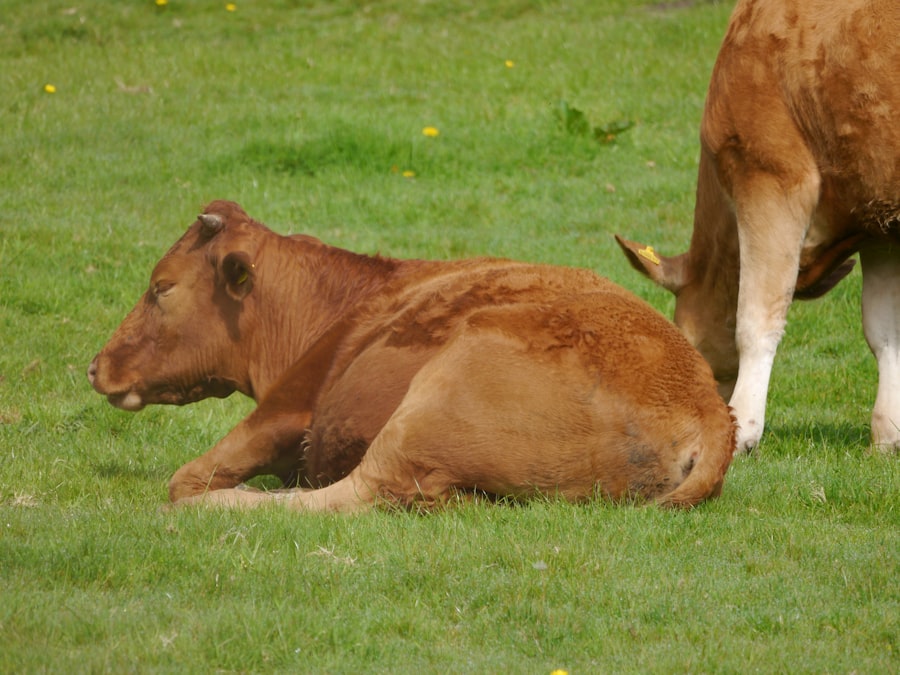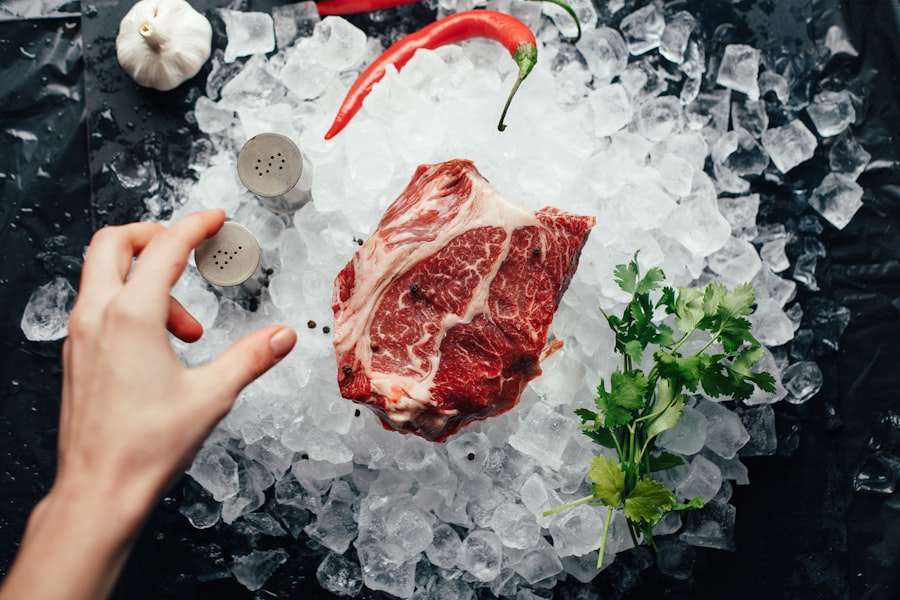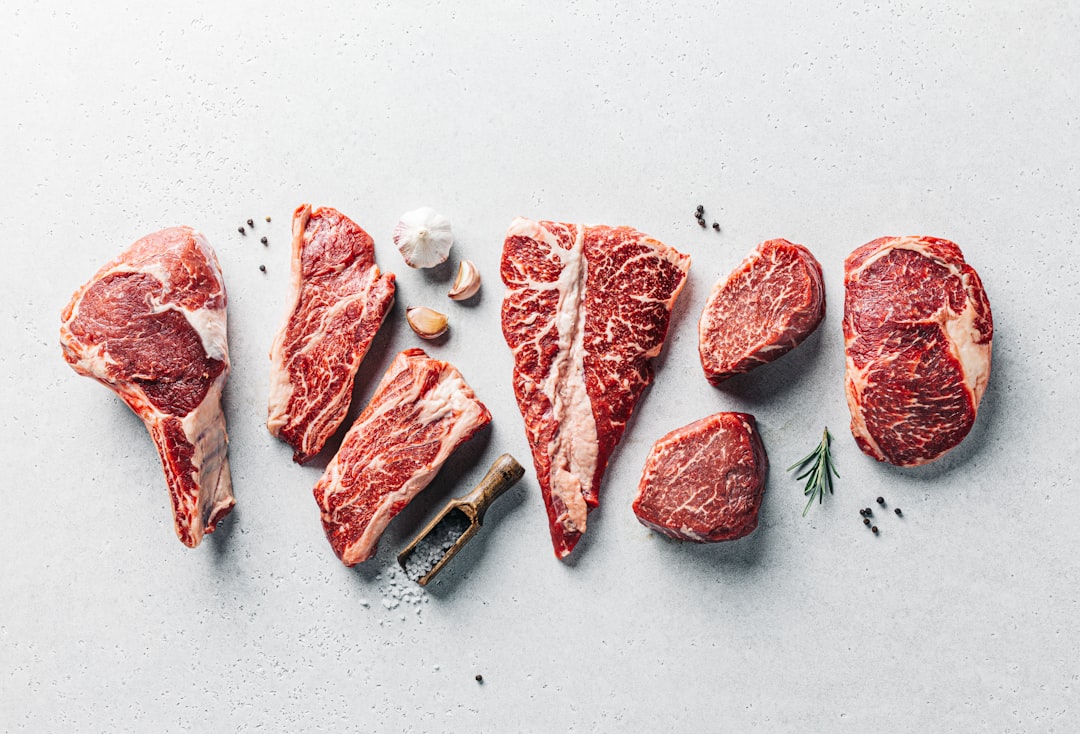Meatloaf is a quintessential comfort food that has graced dinner tables across the globe for generations. This hearty dish, typically made from ground meat, is often combined with various ingredients to create a flavorful and satisfying meal. Its versatility allows for a wide range of interpretations, making it a beloved staple in many households.
The appeal of meatloaf lies not only in its rich taste and texture but also in its ability to evoke nostalgia, reminding many of family gatherings and home-cooked meals. The preparation of meatloaf is relatively straightforward, which contributes to its popularity among home cooks. It can be easily customized to suit individual tastes and dietary preferences, making it an ideal dish for families with diverse palates.
Whether served with mashed potatoes, vegetables, or a tangy sauce, meatloaf remains a comforting and filling option that can be enjoyed any day of the week.
Key Takeaways
- Meatloaf is a classic comfort food dish made from ground meat, seasonings, and other ingredients, typically baked in a loaf shape.
- Meatloaf has been a popular dish in the United States since the 19th century, with variations found in many different cultures around the world.
- Classic meatloaf ingredients include ground beef, breadcrumbs, eggs, onions, and seasonings like salt, pepper, and garlic powder.
- Making meatloaf involves mixing the ingredients, shaping the mixture into a loaf, and baking it until fully cooked.
- Tips for making the perfect meatloaf include using a mix of ground meats, adding moisture with ingredients like ketchup or Worcestershire sauce, and letting the meatloaf rest before slicing.
History of Meatloaf
The origins of meatloaf can be traced back to ancient times, with variations appearing in various cultures throughout history. The concept of combining ground meat with fillers such as breadcrumbs or rice dates back to the Roman Empire, where it was common to mix meats with spices and other ingredients to create a cohesive dish. As culinary practices evolved, so did the recipes for meatloaf, adapting to local ingredients and tastes.
In the United States, meatloaf gained significant popularity during the Great Depression as a way to stretch limited resources. Families would use inexpensive cuts of meat combined with fillers like oats or breadcrumbs to create a filling meal that could feed many. The dish became a symbol of frugality and resourcefulness, embodying the spirit of American home cooking.
By the mid-20th century, meatloaf had solidified its place in American cuisine, often appearing in cookbooks and family recipes as a staple comfort food.
Ingredients for Classic Meatloaf

Creating a classic meatloaf requires a few essential ingredients that come together to form a cohesive and flavorful dish. The primary component is ground meat, which can be beef, pork, turkey, or a combination thereof. Ground beef is the most traditional choice, providing a rich flavor and satisfying texture.
The fat content of the meat is also important; a blend of lean and fatty cuts ensures that the meatloaf remains moist during cooking. In addition to the meat, several other ingredients are crucial for achieving the perfect meatloaf. Breadcrumbs or oats serve as binders, helping to hold the mixture together while also adding texture.
Eggs are typically included as well, acting as a binding agent that helps maintain the loaf’s shape. Seasonings such as salt, pepper, garlic powder, and onion powder enhance the flavor profile, while fresh herbs like parsley or thyme can add brightness. Finally, many recipes call for a topping of ketchup or barbecue sauce, which caramelizes during baking and adds an extra layer of flavor.
Step-by-Step Instructions for Making Meatloaf
| Ingredients | Quantity |
|---|---|
| Ground beef | 1 1/2 pounds |
| Bread crumbs | 1 cup |
| Eggs | 2 |
| Onion | 1, chopped |
| Garlic | 2 cloves, minced |
| Ketchup | 1/2 cup |
| Worcestershire sauce | 2 tablespoons |
| Salt | 1 teaspoon |
| Black pepper | 1/2 teaspoon |
Making meatloaf is a straightforward process that can be broken down into several key steps. First, preheat your oven to 350°F (175°C) to ensure it reaches the right temperature for baking. In a large mixing bowl, combine your chosen ground meat with breadcrumbs or oats, eggs, and seasonings.
It’s essential to mix these ingredients gently; overmixing can lead to a dense loaf rather than a tender one. Once the mixture is well combined, shape it into a loaf form and place it in a baking dish or on a lined baking sheet. If you prefer a more traditional presentation, you can use a loaf pan.
Before placing it in the oven, spread your desired topping—be it ketchup or barbecue sauce—over the top of the meatloaf. Bake for approximately 1 hour or until the internal temperature reaches 160°F (70°C). Allow the meatloaf to rest for about 10 minutes before slicing; this helps retain its juices and makes for cleaner cuts.
Tips for Making the Perfect Meatloaf
Achieving the perfect meatloaf involves attention to detail and some helpful tips that can elevate your dish. One crucial aspect is selecting the right balance of fat in your ground meat; using an 80/20 blend of lean to fatty meat is often recommended for optimal moisture without being overly greasy. Additionally, incorporating finely chopped vegetables such as onions, bell peppers, or carrots can enhance both flavor and moisture content.
Another tip is to avoid overmixing the meat mixture; doing so can lead to a tough texture. Instead, mix just until combined and then shape it gently into a loaf. For added flavor complexity, consider incorporating Worcestershire sauce or mustard into the mixture.
Finally, using a thermometer to check for doneness ensures that your meatloaf is cooked perfectly without being dry.
Variations on Classic Meatloaf

While classic meatloaf holds a special place in many hearts, there are countless variations that cater to different tastes and dietary needs. For instance, turkey or chicken meatloaf offers a lighter alternative while still providing the comforting essence of traditional recipes. These poultry-based versions often benefit from additional moisture sources like grated zucchini or finely chopped mushrooms.
For those seeking bold flavors, consider experimenting with international influences. A Mexican-inspired meatloaf might incorporate spices like cumin and chili powder along with black beans and corn for added texture and flavor. Alternatively, an Italian version could include marinara sauce and Italian herbs like basil and oregano, topped with mozzarella cheese for a delightful twist.
These variations not only keep the dish exciting but also allow cooks to showcase their creativity in the kitchen.
Serving Suggestions for Meatloaf
Meatloaf is incredibly versatile when it comes to serving options. Traditionally served with sides like mashed potatoes and green beans, it can also be paired with roasted vegetables or a fresh salad for a lighter meal. The comforting nature of meatloaf makes it an excellent candidate for hearty sides; creamy coleslaw or buttery corn on the cob complement its rich flavors beautifully.
For those looking to elevate their presentation, consider slicing the meatloaf into thick pieces and serving it on a bed of creamy polenta or alongside garlic mashed cauliflower. Drizzling gravy or additional sauce over the top can enhance both flavor and visual appeal. Additionally, serving meatloaf sandwiches made from leftovers is another delightful way to enjoy this dish; simply layer slices between bread with your favorite condiments for a satisfying lunch option.
Pairing Wines with Meatloaf
When it comes to pairing wine with meatloaf, several options can enhance the dining experience. A medium-bodied red wine such as Merlot or Cabernet Sauvignon complements the rich flavors of beef-based meatloaf beautifully. The tannins in these wines help cut through the fat while enhancing the savory notes of the dish.
For those opting for turkey or chicken meatloaf, white wines like Chardonnay or Sauvignon Blanc can provide a refreshing contrast. These wines often have bright acidity that balances the richness of poultry-based dishes. Additionally, if you’re serving an Italian-style meatloaf topped with marinara sauce, consider pairing it with Chianti or another Italian red wine that echoes the flavors of the sauce.
Making Meatloaf Ahead of Time
One of the many advantages of meatloaf is its suitability for meal prep and make-ahead cooking. Preparing meatloaf in advance allows flavors to meld beautifully while saving time on busy weeknights. To make it ahead of time, simply follow your recipe up until baking; instead of placing it in the oven immediately, cover it tightly with plastic wrap or aluminum foil and refrigerate it for up to 24 hours.
When you’re ready to cook it, remove it from the refrigerator and let it sit at room temperature for about 30 minutes before baking; this helps ensure even cooking throughout. If you prefer to freeze your meatloaf for longer storage, shape it into a loaf and wrap it tightly in plastic wrap followed by aluminum foil before placing it in the freezer. This method allows you to have homemade comfort food ready at your convenience.
Freezing and Reheating Meatloaf
Freezing meatloaf is an excellent way to preserve leftovers or prepare meals in advance without sacrificing quality. To freeze cooked meatloaf effectively, allow it to cool completely before slicing it into portions. Wrap each slice tightly in plastic wrap and then place them in an airtight container or freezer bag labeled with the date for easy identification later on.
When it comes time to reheat your frozen meatloaf, there are several methods available depending on your preference. For best results, thaw slices overnight in the refrigerator before reheating them in an oven set at 350°F (175°C) until warmed through—this usually takes about 20-30 minutes depending on thickness. Alternatively, you can reheat individual slices in the microwave; just be sure to cover them with a damp paper towel to prevent drying out during heating.
The Timeless Appeal of Meatloaf
Meatloaf stands as an enduring symbol of comfort food that transcends generations and cultural boundaries. Its rich history reflects not only culinary evolution but also societal changes that have shaped how we view food today. With its simple yet satisfying ingredients and endless possibilities for customization, meatloaf continues to be a beloved dish that brings families together around the dinner table.
Whether enjoyed in its classic form or adapted with modern twists, meatloaf remains relevant in contemporary cuisine. Its ability to evoke nostalgia while accommodating diverse tastes ensures that this timeless dish will continue to hold a special place in our hearts—and on our plates—for years to come.



